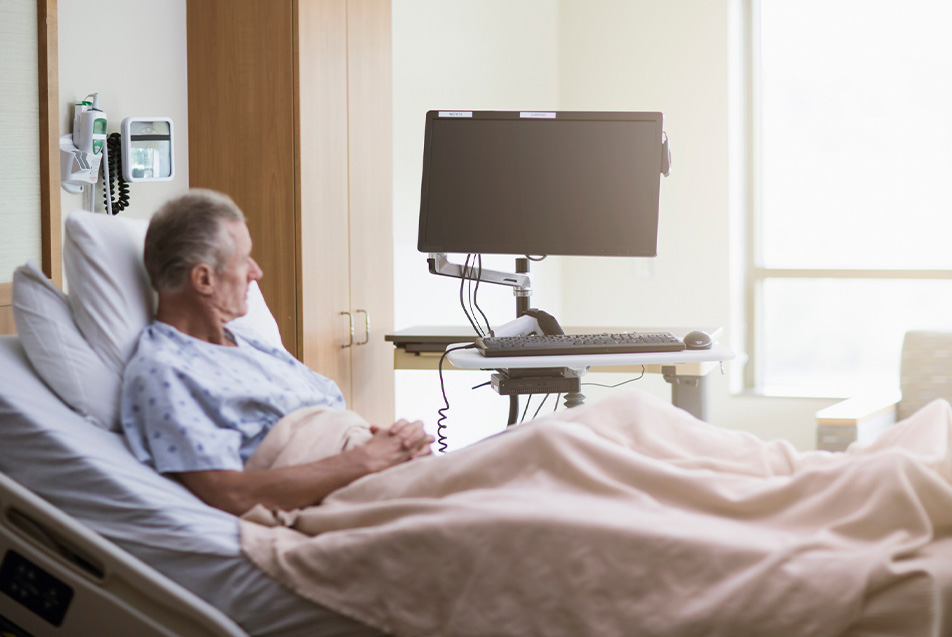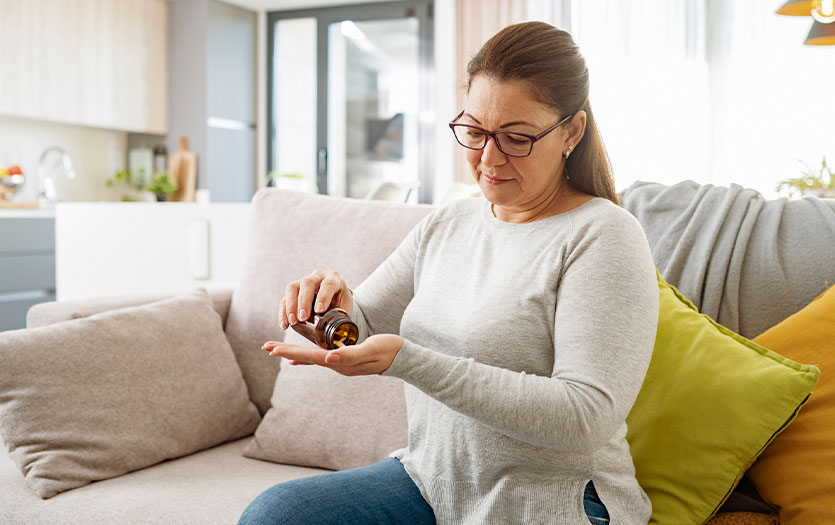
This pandemic has been unlike anything we’ve ever seen. With an onslaught of information and new discoveries daily, our knowledge of COVID-19 continues to grow. We asked Mohammad Vaziri, MD, PPG – Hospital Medicine, to answer some important questions regarding the novel coronavirus and the long-term effects associated with it.
What are the long-term effects of COVID-19?
This is best answered by categorizing patients into three cohorts:
- Mild: These people are coming in as an outpatient, getting diagnosed and treated in the ER but are not requiring supplemental oxygen and are overall stable and sent home. For these patients, we expect that their symptoms, such as shortness of breath, fatigue and fever, will have generally resolved by the end of their quarantine period, which is about 14 days. I don’t expect them to have any further degradation of their quality of life.
- Moderate: The second are patients I would label as moderately ill. They come to the emergency room with shortness of breath and are found to be hypoxic, requiring supplemental oxygen. They will spend some days in the hospital but recover quickly in the sense that we can decrease their oxygen back to room air and don’t have any other organ involvement. After these patients go home and remain under quarantine for 14 days, they shouldn't have a fever or severe shortness of breath like they did in the beginning. I do expect them to have some mild shortness of breath with exertion and mild to moderate fatigue, which may limit their day-to-day activities for up to 2-4 weeks after their acute symptoms have resolved.
- Severe: The third cohort would be severe cases. These patients are coming into the emergency department initially with moderate disease, but after a few days their respiratory symptoms worsen, requiring higher and higher levels of oxygen and, in some cases, they may need to be upgraded to the ICU. They may also have other organ involvement which may further deteriorate their condition. Then, even in the recovery phase, many of these patients will require intense physical and occupational therapy because they may have developed debility or deconditioning of their muscles. Even after six weeks out of their acute illness, these patients will probably still have moderate shortness of breath and even require supplemental oxygen at home for months after the illness. Fatigue could also last for a couple of months.
Unfortunately, each case is varied and not just based on age or preexisting conditions. I’ve seen healthy people who will get sick and need rehab for months while other patients with multitudes of chronic conditions and severe COVID will recover rapidly. It’s such unknown territory, but those with severe cases will likely still experience shortness of breath, fatigue, joint pain and body aches for longer periods.
Are there any other long-term effects involving other areas of the body?
COVID-19 primarily affects the lungs. While that’s the primary source of the illness, we’re also seeing a blood clot phenomenon. It’s increasing the development of blood clots, from simple deep venous thrombus (DVT) to the more complex blood clots that can cause stroke, heart attacks and artery clots causing limb damage and ischemia. It’s very unusual that this infectious agent has such a propensity to cause blood clots. So much so that the Centers for Disease Control and Prevention (CDC), National Institutes of Health (NIH) and other trusted medical sources have recommended the use of higher doses of prophylactic agents like blood thinners. It’s no surprise that anyone who has been ill from any disease process has a higher risk of developing a blood clot, but the propensity of COVID-19 causing it is much higher, which can lead to complications that could cause lifelong damage.
In addition to blood clots, COVID-19 patients also have a higher risk of renal failure and the potential need for dialysis. They may recover, but it makes everything harder, including their overall deconditioning, length of hospital stay and rehabilitation. It’s a multi-system disease, it’s not just the lungs.
Are you encouraged by the reduction of death or do you expect it to spike in the future?
I expect the mortality rate to continue to decline, mainly because we know a lot more than we did in the beginning. Numerous clinical trials of several new therapeutics have been favorable in reducing mortality. Parkview has been very involved in getting in on those clinical trials early, so we have access to these medicines which is a great help. These trials allow us to have hope and a form of treatment that is integral in the reduction of mortality. In the beginning, we had no idea what to do, like every other physician out there, but as the data started coming in, we followed it, and now we’re seeing better outcomes. I’m hopeful that the mortality numbers will continue to decline.
What have you learned while treating patients?
I don’t think it’s any different than anything else. It’s recognizing the illness early and getting the test done early. Having patients come to the hospital to be treated and monitored is crucial. I’ve learned that some patients will have symptoms like fatigue and fever for four or five days, but the pulmonary symptoms don’t start until days six and seven. That’s when they come in and then rapidly decline, which is why it’s important to keep an eye on patients in the hospital even though it seems like they’re stable.
Let’s say for regular pneumonia, influenza or other viral illnesses, if a patient is in the hospital for two days and their oxygen requirement hasn’t increased but they’re feeling better overall, you may consider discharging them. With COVID-19, I’m not doing that. I’m keeping them in the hospital because I know by days 7-10, after the start of their symptoms, if it’s going to get worse, that’s when it’s going to happen. It’s imperative to keep them admitted because an early discharge could be detrimental to their health.
In regards to medication, we’ve started using steroids empirically, in certain cases, when the disease becomes severe. There’s also a term we use called “cytokine storm”. This is a phenomenon when the immune system overreacts to the illness, in this case, COVID-19, causing more damage than good. During that time, we postulated that steroids would help potentially reduce that damage and it has. There was a big study that came out of the UK proving it.
Overall, it’s a constant learning process, but with Parkview’s help, we can be informed. The command center has been integral, constantly giving us guidelines and evidence-based protocols that have been extremely helpful and very important.
Anything else COVID patients and loved ones should be aware of?
Another long-term impact that tends to go underrecognized is the potential for physiological impact both in the acute phase and when people go home. I think patients are scared. They have a novel illness, they have to stay in the hospital with no visitors. It’s very difficult to know that someone’s family member, in front of me, is having difficulty breathing and is scared. I want to be there for them along with the staff and everyone at Parkview, trying to support them and their families through this time. We have to wonder what kind of lasting psychological impact is this going to have on the population at large? Even being quarantined at home and not being able to hug your kids or see your loved ones. This is ongoing and we, as healthcare providers, need to recognize this and offer as much support and other therapies as we can to help with that part of it.



